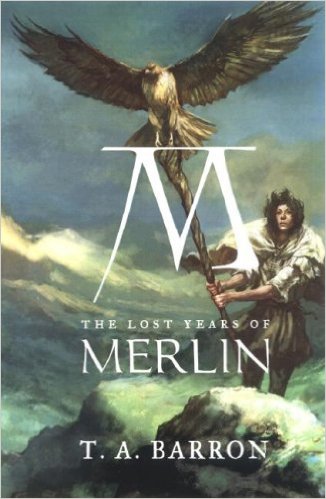[button color=”black” size=”big” link=”http://affiliates.abebooks.com/c/99844/77798/2029?u=http%3A%2F%2Fwww.abebooks.com%2Fservlet%2FSearchResults%3Fisbn%3D9781593081515″ target=”blank” ]Purchase here[/button]
The Count of Monte Cristo
by Alexandre Dumas
Here is a book that is deeply embedded in western culture. Written in French in 1844, its influence is so widespread even in non-French-speaking countries that references, situations, and attitudes from it inform the make-believe playtime of countless American boys. And yet I would be surprised if one American in a hundred has actually read the novel, in translation or otherwise. I, for one, got by on an illustrated, abridged children’s version of it when I was a boy, and later contented myself with repeated viewings of the film adaptation starring Jim Caviezel and Guy Pearce. More recently, the daily cross of commuting—under which I sometimes felt as though buried at the wheel of my car—prompted me to beguile the monotonous hours by “reading” an audiobook version of the story. So, with gratitude to reader John Lee for lending his voice to so many characters, I can report that the complete, unabridged novel is most entertaining, thank you.
The story begins on the eve of Napoleon’s return from his first exile on the island of Elba, the “hundred days” dramatized by so many other books I have reviewed. Into the port of Marseilles, in the south of France, sails a young merchant captain named Edmond Dantès. Promoted to command by the death of his skipper, Edmond is loved by his crew, by the merchant ship owner, by his old father, and by the fair Mercédès, a Spanish maiden who has agreed to be his wife. Alas, he is not so well-loved by the Spaniard Mondego who loves Mercédès, nor by ship’s purser Danglars who envies his rise to command. These two devise a plot to frame Edmond for treasonously conspiring with the exiled Emperor, aided by the cowardly silence of Edmond’s morally weak friend Caderousse and the ruthless ambition of a deputy prosecutor named Villefort, who—keen to secure his rise in career and society—would make the innocent Dantès vanish rather than see his own father exposed as a Bonapartist.
So begins Edmond’s fourteen-year burial in the Château d’If, an island prison in which life is a living death, and from which death is the only escape. At least, so it is until Edmond—profiting by the death of the Abbé Faria, his next-dungeon neighbor, teacher, and friend—sews himself up inside the Abbé’s body-bag and gets tossed into the Mediterranean. By one lucky chance after another, Edmond makes it to land, finds out who done him wrong, digs up the Abbé’s insanely vast treasure, and begins to pass himself off as the Count of Monte Cristo (which is an uninhabited island in the Mediterranean, well suited to the needs of pirates, smugglers, and escaped prisoners hatching revenge). From there, the Count gradually re-enters society, insinuating himself into the confidences of the younger generation, including the sons and daughters of Danglars, Mondego, and Villefort. Then he unleashes an interlocking set of devilishly subtle schemes to destroy all three men in detail.
During the intervening years, Mondego has married Mercédès, fathered a son (who, notwithstanding the above-mentioned movie, is not even the tiniest bit Edmond’s son), and mounted a ladder of political power based on his supposedly heroic military exploits. Long story short (hereafter “L.S.S.”), Mondego blows his brains out after being exposed as a vile traitor whose daring deeds are a tissue of fiction.
Danglars, meanwhile, has shrewdly invested the money he embezzled from Edmond’s former employer (whose suicide, and that of his son, the Count pays dearly to prevent). Now filthy rich, unhappily married, and father to a daughter whose probable lesbianism only troubles him to the extent that it frustrates his plans to marry her off at great advantage, Danglars enjoys a reputation as one of the leading bankers in Paris… until, L.S.S., the Count meddles with the market in just such a way as to bring his old nemesis to total ruin. (After many sorrows, Danglars eventually repents).
And finally, Villefort has become one of the most respected judges in the Parisian courts, married twice, and fathered a child by each wife. His angelic elder daughter Valentine takes care of Villefort’s paralytic father, that embarrassing old Bonapartist; but his youthful second wife, anything but angelic, wants her bratty son to inherit the fortunes destined for Valentine. Taking a hint from the enigmatic Count, Mme. Villefort embarks on a career as a poisoner, exposing her husband to one scandal on top of another and almost crushing the hopes of a pair of ardent young lovers.
Besides engineering all these disasters—the last of which degenerates into a bloodbath that sickens even himself—the Count of Monte Cristo, considering himself the agent of divine retribution, leads the cunning Caderousse into temptation, with macabre results, finally becoming a witness to the man’s murder by another accomplice in his program of revenge. And so, after an enormous, multi-layered study of assassination in all its flavors and forms, the Count turns aside from his gruesome mission and sails off into the sunset with a devoted Greek beauty named Haydée. And you sigh with relief, because all the bad old men (and a few younger bad people) are done in, and the promising youngsters are safe from the duels and suicides and poisonings that had threatened them, and though there is no bringing back what Edmond Dantès has lost, by George, he’s got a cave full of treasure to finance whatever he goes for next…
Can’t you see what generations of boys, and probably quite a few girls, see in this romance? They say revenge is a dish best served cold. It doesn’t get much colder than being chilled for fourteen years in an island dungeon, years spent acquiring culture and a fortune and a richly detailed plan to make one’s enemies pay with interest for what they have done. But here romance crosses the invisible line into fantasy and folklore, with a dark hero straight out of comic books, emerging like a phantom out of thin air, knowing everything about everyone, being everywhere at once, and seeming capable of superhuman feats, thanks to the combination of unlimited time to develop them, money to buy them, and cold-burning anger that can only be quenched, in the end, by the tears and prayers of a devoted mother and a grieving lover.
It’s a perfect piece of entertainment, except perhaps for the Count’s final caper in which he keeps young Maximilien in cruel suspense until the poor kid is all but begging to be allowed to die—and this guy, mind you, is one of his friends. But, oh well! You can’t expect to be able to live a life based on revenge without going a little mad. And beholding the Count’s madness is an experience in which horror blends with a vindictive sense of satisfaction, and in which suspense, mystery, conventionally youthful and innocent romantic subplots, and unconventionally grown-up and worldly ditto are all mixed up together with material culled from the “true crime” pulp fiction of Dumas’ day. No, children, it wasn’t altogether original; but The Count of Monte Cristo remains a great entertainment of international renown because it combines all that unoriginal material in a vivid, thrilling, all-around tour-de-force of storytelling. L.S.S.: The whole long story is worth experiencing!



